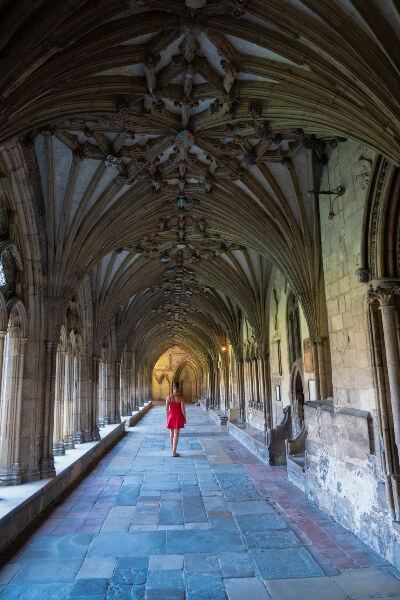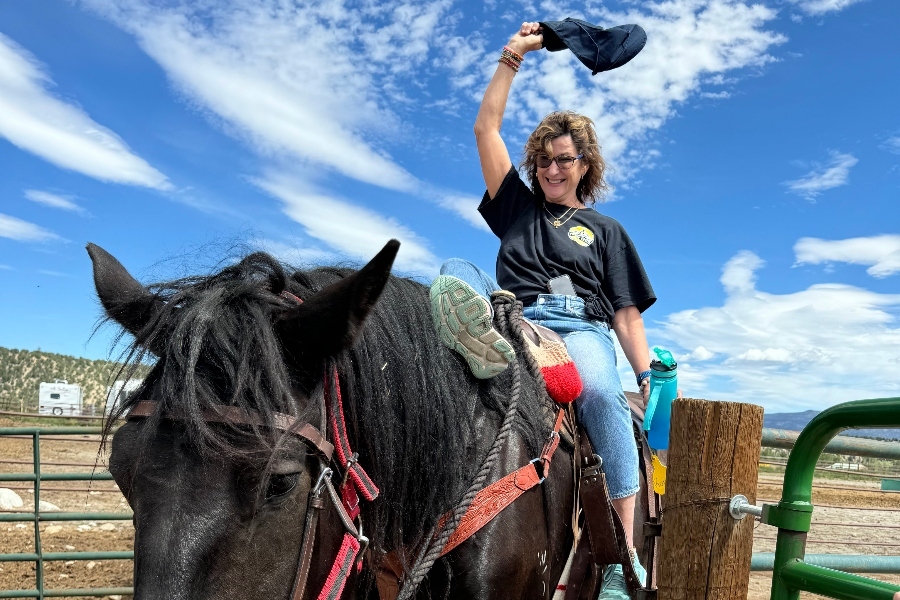I had just finished day three of my walk from London to Canterbury, and this particular pilgrim didn’t think she could face another dinner of fish and chips.
Trouble is, the best and the worst thing about the pilgrimage to Canterbury is the same thing: hardly any tourists do it, so my ramblings had been largely rural, cutting through apple orchards and hops fields, stopping for the night at various so-called inns that were actually just rooms for rent in private homes above village taverns. What these places offered was an unbelievable level of charm. Everyone in town appeared to be crammed into these small pubs, from the vicar to the hairdresser to a teenage mom pushing a double-wide pram. I expected someone to keel off their barstool at any moment and Miss Marple to show up.
What they didn’t have was a menu. The implication is that if you’re wanting anything other than fish, chips, and beer, you better keep walking. But by the final night of my journey, my feet were so sore that I wore my bedroom slippers downstairs to the bar where I climbed on a stool and timidly asked, “Do you have anything other than fish and chips?”
A dead silence fell on the pub.
My Lifelong Dream of Walking the Canterbury Trail
I’d been warned as much.
When I first started researching what my lifelong dream of walking from London to Canterbury would actually entail, I saw at once I’d need a guide. In some ways, the walk is a snap, about 60 miles through gently rolling farmland, easily covered in three or four days, depending on your number of stops.
The challenge comes in with the fact Canterbury is a “broken trail,” meaning it’s periodically interrupted by highways and rivers. Even the most determined pilgrim needs someone to occasionally pick them up and carry them forward.
Not to mention that one doesn’t simply walk out of London.
Even the most determined pilgrim needs someone to occasionally get them past a highway or a river, so I hired a wonderful retired couple.
So I hired a wonderful retired couple who specialized in customized walking tours. With the kind of fervor only an ex-English major and medieval history nerd can muster, I started where Geoffrey Chaucer’s pilgrims began in his famous 14th-century work, Canterbury Tales, on the site of the Tabard Inn in London. Then I took a train to the suburbs to meet up with my guides and begin the true walk.
“Eat up before you leave the city,” my guide Jane had advised. “The accommodations along the trail are rather…basic.”
But that, of course, is part of what makes a pilgrimage vacay such a unique kind of experience. You see a country in a different way when you walk through it, absorbing each detail at eye level and step by step, stopping to chat with the locals along the way. (Hops farmers, in case you’re wondering, are a particularly jolly lot.)
And you can play the itinerary by ear – since we were reasonably fast hikers, we worked in some side trips to both Hever Castle, the allegedly haunted childhood home of Anne Boleyn, and the legendary white cliffs of Dover.

Past Meets Present: A Modern Pilgrim’s Progress
Of course, modern pilgrims tend to move fast. In Chaucer’s time, the journey typically took two weeks. It was an undertaking of significant peril back in those days, when most people died in the towns where they’d been born. Only those most desperately in search of a miracle took the risk to travel.
In the past, most Canterbury pilgrims were ill and a lot of them simply didn’t make it. We passed many old unmarked graves.
It was believed that the shroud of St. Thomas Becket had curative powers, so the majority of the pilgrims heading to Canterbury, where this relic was, were ill when they began, and a lot of them simply didn’t make it. We passed many unmarked and clearly ancient graves as we walked, sometimes the sight of them making me tear up, and Jane explained that if one couldn’t journey to Canterbury yourself, you could earn spiritual brownie points by helping a pilgrim, so those walking the trail were often offered shelter or even medical care by the villagers along the way.
Am I the only one who didn’t know that the words hospital and hospitality have the same root? Both gained use in the English language during the years when Canterbury was the hottest, and perhaps only, travel destination in England.
Where I Slept on My Canterbury Pilgrimage
Staying in the pub owners’ homes was a campy sort of fun, even if I was clearly sleeping in the bedrooms of kids who were off at university and, on one memorable occasion, sharing quarters with the family iguana. The first night I went downstairs determined to blend in. Massive fail.
The second night, I gamely entered a darts game where I had to chug ale each time I missed the entire target. (Now that I think of it, perhaps I hallucinated that iguana.) But by the third night, I had given up any pretense of passing as a local and was pretty much begging for anything but fish and chips.
The young barmaid looked flummoxed. It was clearly a question she’d never heard before. “Just a minute,” she said and went into the kitchen. In a second she was back.
“We have a pork chop,” she said. “But it’s rather dear.”
“How dear is it?” I asked, trying not to think too hard about why a pub would be in possession of a single pork chop.
“Just a minute,” she said again. Everyone in the room was staring at me by this time. It took a while, but eventually, she came back. “Ten pounds.”
I did the quick math in my head. About $13 dollars, which seemed ridiculously cheap considering it was the only pork chop in town. I became even bolder. “And do you have anything besides beer?”
She turned on her heel and disappeared back into the kitchen, only to return in a matter of seconds. “We have a bottle of red wine,” she said. “But it’s rather dear.”
“How dear?”
“Ten pounds”
“Sold,” I said, dimly aware that by now the entire pub full of people had turned their chairs and were openly gaping at this high-rolling American who’d showed up out of nowhere in her bedroom slippers.
Now, the entire pub full of people was openly gaping at me, the high-rolling American in her bedroom slippers.
The wine turned out to be a French Bordeaux, the label unintelligible from age and so full of sediment that they had to strain it through a sieve. It’s the kind of situation that could turn out really well or really badly. Luckily, in this case, it was pretty darn fantastic, as was the pork chop, which showed up alone on the plate but nicely grilled.
The next morning when Jane’s husband Tom showed up to take me to the first trailhead of the day I told him I’d had quite the adventure the night before.
He laughed and said, “Oh, I heard.”

Reaching the Canterbury Cathedral
That afternoon we walked into Canterbury where, as a special surprise, Jane had arranged for a priest to give me a version of the medieval blessing offered to medieval pilgrims who had finished the trail, complete with a foot washing.
Overwhelmed by the majesty of Canterbury Cathedral and the thought of the thousands of nameless souls who had come before me, my tendency to spontaneously tear up on the trail gave way to huge shuddering sobs.
I was overwhelmed by the majesty of the cathedral and the thought of the thousands of nameless souls who had come before me.
Canterbury in itself is a delight, a university town full of streams where students punt tourists along the waterways, passing innumerable high-end restaurants where all kinds of pleasures await. Jane, Tom, and I toasted our memories – despite living in the area most of their lives, neither had ever walked a foot of the trail before I hired them – and laughed over the adventures that come when one chooses the path literally less taken.
Would I do it again? In a heartbeat. But I know I could never recreate that exact pilgrimage because the beauty of Canterbury lies not only in the scenery, the history, and the sense of accomplishment that comes from walking a significant distance.
The journey truly does have the power to heal you wherever you’re hurting, and even soothe the pains you didn’t know you had. To be honest, it’s a bit of a miracle.























0 Comments